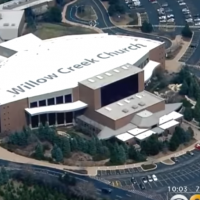 “The nature of [the Christian] concept of the flesh is that we are bent toward being self-preserving and self-exalting. Somehow that bent gets fed and flourishes as we become more visible to an approving public. Leading a very large church can be extremely difficult to do well, and almost dangerous from that standpoint.”
“The nature of [the Christian] concept of the flesh is that we are bent toward being self-preserving and self-exalting. Somehow that bent gets fed and flourishes as we become more visible to an approving public. Leading a very large church can be extremely difficult to do well, and almost dangerous from that standpoint.”
(Brian Sanders – Dallas News) This summer, one of the nation’s largest and most influential megachurches suffered the loss of its senior leader and entire governing board, an event that has escalated a conversation about whether the megachurch model is sustainable.
Willow Creek Community Church in the Chicago suburb of South Barrington, Ill., boasts 26,000 weekly attenders and six satellite campuses. It is the hub for the Willow Creek Association, a global network of churches and ministry training programs that includes more than 13,000 member churches in 45 countries. And it hosts an annual event called the Global Leadership Summit that attracts 10,000 attenders and 156,000 viewers at simulcast sites worldwide. Summit speakers have included Jimmy Carter, Bill Clinton, Colin Powell, Tony Dungy, Jack Welch, Carly Fiorina, Jim Collins and Bono.
In other words, Willow Creek is huge. In the evangelical world, it casts an enormous shadow.
Now, after allegations of inappropriate sexual conduct by its senior leader, Bill Hybels, Willow Creek faces an existential crisis. Thousands have left already — almost 38,000 fewer people tuned into the Global Leadership Summit in August than the year before.
And Willow Creek isn’t the first megachurch collapse.
Research:
Willow Creek Church’s mishandling of Bill Hybels allegations of misconduct